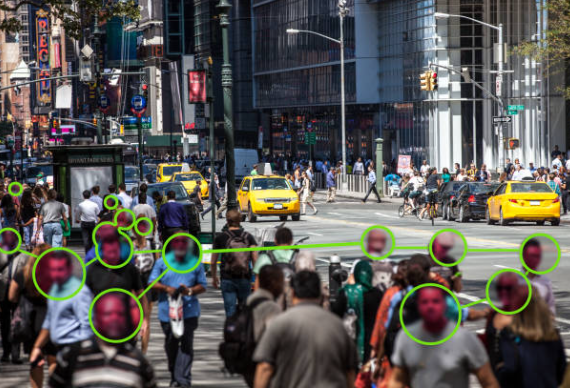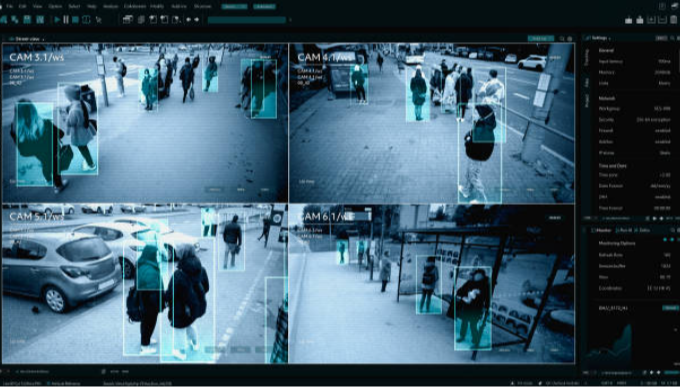
Balancing Act: The Ethics of Using Face Recognition in Policing
In recent years, face recognition technology has become a prominent tool in various sectors, from unlocking smartphones to enhancing security at airports. This technology, which uses sophisticated algorithms to identify and verify individuals based on their facial features, has seen significant advancements and widespread adoption. Its integration into policing has sparked considerable debate, touching on issues of privacy, ethics, and public safety.
Face recognition technology operates by capturing an image of a person’s face and comparing it to a database of known faces. The process involves several steps, including face detection, feature extraction, and matching. Advanced algorithms can analyze minute details, such as the distance between the eyes or the shape of the jawline, to create a unique facial signature for each individual. This technology promises to revolutionize law enforcement by providing a powerful tool for identifying suspects, finding missing persons, and preventing crimes.
However, the deployment of face recognition in policing is not without controversy. The potential for misuse, concerns over accuracy, and the risk of infringing on civil liberties make this a complex and contentious issue. Privacy advocates warn that pervasive surveillance could lead to a society where individuals are constantly monitored and tracked, eroding the fundamental right to privacy. Moreover, studies have shown that face recognition systems can exhibit biases, particularly against certain racial and gender groups, leading to questions about their fairness and reliability.
The relevance of this topic cannot be overstated. As face recognition technology becomes more prevalent, it is crucial to examine its implications thoroughly. Understanding the ethical dimensions and potential impacts on society is essential for ensuring that its use aligns with democratic values and human rights. This blog post aims to explore the ethical considerations of using face recognition in policing, weighing the benefits against the risks, and discussing how we can strike a balance between security and individual freedoms.
The Rise of Face Recognition in Policing

The concept of using facial features for identification has roots that stretch back centuries, but it wasn’t until the advent of modern computing and digital imaging that face recognition technology truly began to take shape. In the late 20th century, researchers started developing algorithms capable of detecting and comparing facial patterns. Early systems, though rudimentary by today’s standards, laid the groundwork for the sophisticated technologies we see now. These pioneering efforts were driven by the desire to enhance security and streamline identification processes, marking the beginning of a new era in law enforcement.
Current Applications in Law Enforcement
Today, face recognition technology is an integral part of many law enforcement agencies' toolkits. Its applications are diverse and growing. Police departments use it to identify suspects in criminal investigations by comparing surveillance footage against databases of known offenders. It’s also employed at public events and in high-traffic areas to scan crowds for individuals with outstanding warrants. In some regions, police officers are equipped with mobile devices that allow them to perform real-time face recognition in the field, aiding in the quick identification of individuals during stops and searches.
Beyond identifying suspects, face recognition is also used to find missing persons, including children and victims of human trafficking. Airports and border controls implement the technology to enhance security and streamline passenger processing, ensuring that individuals entering and exiting the country are who they claim to be. This broad array of applications underscores the technology’s potential to significantly impact public safety and crime prevention.
Technological Advancements
The rapid advancement of face recognition technology has been driven by improvements in machine learning and artificial intelligence. Modern systems leverage deep learning techniques to achieve high levels of accuracy and efficiency. These algorithms can process vast amounts of data, learning to distinguish subtle differences in facial features that may be imperceptible to the human eye. High-resolution cameras and sophisticated imaging techniques have also contributed to the enhancement of face recognition capabilities, allowing for more precise and reliable identification.
Additionally, the integration of face recognition with other technologies, such as big data analytics and cloud computing, has expanded its potential applications. Law enforcement agencies can now cross-reference facial data with other information sources, providing a more comprehensive view of individuals’ identities and histories. This holistic approach enhances investigative capabilities and supports more effective policing strategies.
As face recognition technology continues to evolve, its role in law enforcement is likely to expand even further. However, these advancements also bring to the forefront critical discussions about privacy, ethics, and the balance between security and individual rights. Understanding the history, current uses, and future potential of this technology is essential for navigating these complex issues and ensuring that its deployment serves the public interest in a fair and just manner.
Lern more here: Police Facial Recognition: Safe or Scary? What You Need to Know (2024)
Ethical Considerations

Privacy Concerns
One of the foremost ethical issues surrounding the use of face recognition in policing is privacy. The ability to capture and analyze an individual's facial features without their knowledge raises significant concerns about the erosion of personal privacy. In a society where surveillance cameras are omnipresent, the potential for constant monitoring becomes a reality. This pervasive surveillance can lead to a chilling effect, where people feel they are always being watched, which could stifle free expression and alter social behavior.
Privacy concerns are exacerbated by the storage and handling of facial data. Unlike other forms of identification, such as passwords or ID cards, facial features are intrinsic and unchangeable. Once compromised, an individual’s facial data cannot be reset or replaced, posing a permanent threat to their privacy. Ensuring that this sensitive information is securely stored and protected from unauthorized access is crucial to mitigating these risks.
Issues of Consent
Another critical ethical consideration is the issue of consent. In many cases, individuals are unaware that their faces are being scanned and analyzed. This lack of informed consent undermines the trust between the public and law enforcement agencies. For technology to be ethically deployed, individuals should have the right to know when and how their biometric data is being used, and they should have the ability to opt out if they so choose.
The consent issue is particularly pertinent in public spaces, where people cannot reasonably avoid surveillance. This raises the question of whether it is ethical to collect and use facial data from individuals who have not explicitly agreed to such monitoring. Developing clear guidelines and policies that respect individuals' rights to consent is essential to address these ethical dilemmas.
Risk of Misuse and Abuse
The risk of misuse and abuse of face recognition technology is a significant ethical concern. There is potential for this technology to be used in ways that go beyond its intended purpose of enhancing public safety. For example, it could be employed for political surveillance, targeting activists, or discriminating against certain groups based on race, gender, or other characteristics.
Cases of wrongful arrests and misidentifications have already highlighted the dangers of over-reliance on face recognition systems. These errors can have severe consequences, including loss of freedom, damage to reputation, and psychological trauma. Ensuring that face recognition technology is used responsibly requires strict oversight, transparency, and accountability measures to prevent abuse and protect individuals' rights.
Moreover, the integration of face recognition technology with other surveillance tools, such as social media monitoring and data analytics, amplifies the risk of creating an invasive surveillance state. It is imperative to establish robust legal frameworks and ethical guidelines to govern the use of this technology, ensuring that it is deployed in ways that are just, equitable, and respectful of human rights.
In conclusion, while face recognition technology offers substantial benefits for policing, its ethical implications cannot be overlooked. Addressing privacy concerns, securing informed consent, and mitigating the risks of misuse and abuse are critical to ensuring that the use of this technology aligns with societal values and respects individual freedoms. As we navigate the complexities of this powerful tool, a balanced approach that prioritizes ethical considerations will be essential to its responsible and just application in law enforcement.
The Problem of False Positives and Negatives
One of the significant challenges facing face recognition technology in policing is the issue of false positives and false negatives. A false positive occurs when the system incorrectly identifies a person as someone they are not, while a false negative happens when the system fails to recognize someone who is in the database. Both types of errors can have serious implications, particularly in the context of law enforcement.
False positives can lead to wrongful accusations and arrests. Imagine a scenario where an innocent person is mistakenly identified as a suspect in a crime. This misidentification can result in legal troubles, damage to one's reputation, and emotional distress. The consequences of a false positive are not just limited to the individual wrongly identified but can also undermine public trust in law enforcement and the judicial system.
On the other hand, false negatives can impede the effectiveness of face recognition technology in solving crimes. If a known offender is not recognized by the system, it could lead to missed opportunities in apprehending criminals and preventing further offenses. This undermines the primary goal of using face recognition in policing, which is to enhance public safety and security.
Racial and Gender Bias in Algorithms
Another critical issue with face recognition technology is the presence of racial and gender biases in its algorithms. Numerous studies have shown that these systems tend to perform less accurately on individuals from certain demographic groups, particularly people of color and women. These biases stem from the datasets used to train the algorithms, which often lack diversity and disproportionately represent certain groups.
For instance, if a face recognition system is predominantly trained on images of white males, it is likely to perform better at identifying individuals from this group while exhibiting higher error rates for people of color and women. This discrepancy can lead to unequal treatment and discrimination in law enforcement practices.
Racial bias in face recognition can result in higher rates of false positives for people of color, leading to unjust targeting and surveillance. This not only exacerbates existing social inequalities but also fosters mistrust between minority communities and law enforcement agencies. Gender bias, similarly, can lead to misidentification and the overlooking of female suspects, compromising the technology's reliability and fairness.
Addressing these biases requires a concerted effort to improve the diversity and representation in training datasets. Developers and researchers must ensure that the datasets used to train face recognition algorithms are inclusive and representative of the entire population. Additionally, ongoing auditing and testing of these systems are necessary to identify and mitigate biases continually.
Furthermore, transparency in how these technologies are developed and deployed is crucial. Law enforcement agencies and technology companies must be open about the limitations and potential biases of face recognition systems. This transparency allows for public scrutiny and accountability, essential for building trust and ensuring ethical use.
Legal and Regulatory Landscape
The use of face recognition technology in policing is governed by a complex web of laws and regulations, which vary significantly across different jurisdictions. These legal frameworks aim to balance the benefits of technological advancements with the protection of individual rights and privacy.
In the United States, there is no comprehensive federal law specifically addressing the use of face recognition technology. However, several states and cities have enacted their own regulations. For instance, cities like San Francisco and Boston have implemented outright bans on the use of face recognition by law enforcement, citing privacy concerns and the potential for misuse. These local regulations reflect growing public apprehension about the technology's implications and demonstrate a cautious approach to its deployment.
At the federal level, laws such as the Privacy Act of 1974 and the Fourth Amendment to the U.S. Constitution provide some degree of protection against unwarranted surveillance and data collection. The Privacy Act regulates the government's collection and use of personal information, while the Fourth Amendment guards against unreasonable searches and seizures. However, these laws were not specifically designed with face recognition technology in mind, leading to ongoing debates about their adequacy in the digital age.
In the European Union, the General Data Protection Regulation (GDPR) offers robust protection for individuals' personal data, including biometric information such as facial images. The GDPR requires explicit consent for the collection and processing of biometric data, thereby providing a higher standard of privacy protection compared to many other regions. Additionally, the GDPR mandates transparency and accountability, requiring organizations to inform individuals about how their data is being used and to implement safeguards against misuse.
Similarly, other countries have begun to develop specific regulations for face recognition technology. In Australia, the government has proposed the Identity-matching Services Bill, which seeks to establish a framework for the use of face recognition across various sectors, including law enforcement. This bill aims to facilitate secure and efficient identity verification while implementing strict controls to prevent abuse and ensure compliance with privacy standards.
Despite these regulatory efforts, there remains a significant lack of uniformity in how face recognition technology is governed worldwide. This inconsistency poses challenges for both law enforcement agencies and individuals, as the rules can vary dramatically from one place to another. The disparity in regulations also complicates international cooperation and data sharing among law enforcement agencies, which is increasingly important in a globalized world.
Public Perception and Trust

Public Opinion on Face Recognition in Policing
Public opinion on the use of face recognition technology in policing is deeply divided, reflecting a broad spectrum of concerns and support. Many people are intrigued by the technology’s potential to enhance public safety, deter crime, and streamline law enforcement processes. The promise of quickly identifying suspects and solving crimes with greater efficiency is compelling for those who prioritize security and order.
However, a significant portion of the public harbors serious reservations about the technology. Concerns primarily revolve around privacy invasion, the risk of surveillance overreach, and the potential for wrongful identifications. High-profile incidents and media reports of face recognition errors have amplified these fears, leading to a growing skepticism about its reliability and ethical use. Surveys and polls frequently reveal that a majority of people are uneasy about the idea of being constantly watched or having their personal data collected without their consent.
Impact on Community-Police Relations
The implementation of face recognition technology has had a tangible impact on community-police relations. In some communities, particularly those with histories of strained relations with law enforcement, the introduction of surveillance technology has exacerbated feelings of mistrust and alienation. Residents often view the technology as an extension of an already intrusive surveillance state, fearing that it will disproportionately target minority groups and exacerbate existing inequalities.
For instance, in cities where face recognition has been deployed extensively, community protests and demonstrations have emerged, with activists arguing that the technology reinforces systemic biases and undermines civil liberties. This backlash underscores the broader challenge of balancing technological advancement with community values and rights. Community leaders and advocacy groups have called for more transparency, accountability, and community involvement in decisions regarding the use of such technology.
Examples of Public Backlash
The public backlash against face recognition technology has manifested in various forms across the globe. In the United States, cities like San Francisco and Portland have enacted bans on its use by law enforcement, driven by local campaigns that highlight privacy concerns and civil liberties. These legislative actions are often supported by grassroots movements and advocacy organizations that argue for stronger protections against surveillance.
In the UK, the deployment of face recognition technology at public events has faced significant opposition. Campaigners have highlighted incidents where the technology failed to accurately identify individuals, leading to false arrests and public outcry. The lack of clear regulations and oversight has further fueled concerns, prompting calls for a moratorium on its use until more robust safeguards are in place.
Globally, similar patterns of resistance are emerging. In India, activists have raised alarms over the government’s use of face recognition technology in surveillance programs, arguing that it disproportionately targets marginalized communities. In response, some regions have seen public demonstrations, legal challenges, and demands for more stringent regulations to protect individual rights.
Balancing Security and Ethics

The Argument for Enhanced Security
Face recognition technology offers substantial benefits for enhancing security and public safety. Proponents argue that it can significantly improve the efficiency of law enforcement by enabling quick and accurate identification of suspects, preventing crime, and aiding in the search for missing persons. In high-risk areas such as airports, stadiums, and public events, face recognition can serve as a critical tool for identifying potential threats and ensuring the safety of large crowds. The ability to rapidly process and match faces against criminal databases can lead to more effective policing, quicker apprehension of dangerous individuals, and a potential reduction in crime rates.
Additionally, the technology can act as a deterrent. The knowledge that law enforcement can swiftly identify perpetrators may discourage individuals from committing crimes. This preventive aspect is particularly appealing in efforts to combat terrorism, human trafficking, and other serious crimes, where timely identification can make a significant difference in outcomes.
Ethical Frameworks for Implementation
While the security benefits are compelling, it is crucial to implement face recognition technology within a robust ethical framework. Ethical considerations must be at the forefront to ensure that its use does not infringe on individual rights or lead to unintended consequences. A comprehensive ethical framework should include principles of transparency, accountability, and fairness.
Transparency involves clear communication about how and why face recognition is being used, what data is being collected, and how that data will be stored and protected. Public awareness and understanding are vital in building trust and ensuring that individuals are informed about the surveillance they are subject to.
Accountability requires that there are mechanisms in place to monitor the use of the technology and hold those who misuse it accountable. This includes regular audits, independent oversight bodies, and strict enforcement of policies governing its use. Law enforcement agencies should be required to document and report their use of face recognition technology, providing detailed justifications for each deployment.
Fairness ensures that the technology is applied equitably, without discrimination or bias. This means that the algorithms must be rigorously tested and validated to prevent racial, gender, and other biases. Inclusive and diverse training datasets are essential to minimize the risk of biased outcomes and ensure that the technology works accurately for all demographic groups.
Best Practices for Responsible Use
To responsibly use face recognition technology in policing, several best practices should be adopted. First, clear and stringent guidelines should be established for when and how the technology can be used. These guidelines should prioritize scenarios where the benefits clearly outweigh the risks, such as in cases involving serious crimes or imminent threats to public safety.
Second, law enforcement agencies should invest in ongoing training and education for officers and personnel using the technology. This training should cover not only the technical aspects but also the ethical and legal implications, ensuring that users understand the importance of respecting individuals' rights and privacy.
Third, there should be a strong emphasis on public engagement and dialogue. Involving community stakeholders in discussions about the deployment of face recognition technology can help address concerns, increase transparency, and build public trust. Public forums, consultations, and feedback mechanisms are effective ways to ensure that community voices are heard and considered in decision-making processes.
Finally, continuous evaluation and improvement of the technology and its applications are crucial. This includes regularly reviewing and updating algorithms to enhance accuracy and reduce biases, as well as assessing the impact of the technology on public safety and individual rights. By maintaining a commitment to improvement and accountability, law enforcement agencies can better align their use of face recognition technology with ethical standards and public expectations.
Future Prospects

Emerging Trends in Face Recognition Technology
Face recognition technology is rapidly evolving, with advancements pushing the boundaries of what is possible. One notable trend is the improvement in accuracy and speed of recognition algorithms. With the integration of deep learning and neural networks, face recognition systems are becoming more adept at identifying individuals in diverse conditions, such as varying lighting, angles, and expressions. These improvements enhance the reliability and utility of face recognition in real-world applications, making it a more effective tool for law enforcement.
Another emerging trend is the development of real-time face recognition capabilities. This involves the ability to process and analyze video feeds instantaneously, allowing for the immediate identification of individuals in dynamic environments like public events or crowded spaces. This real-time analysis can significantly bolster security measures by enabling rapid responses to potential threats.
Moreover, there is a growing interest in multimodal biometrics, which combines face recognition with other biometric identifiers such as iris scans, fingerprints, and voice recognition. This integrated approach can improve overall accuracy and security by providing multiple layers of verification, reducing the chances of false positives and negatives.
Potential Changes in Ethical Standards
As face recognition technology advances, there is a parallel evolution in ethical standards and regulatory frameworks. The increasing sophistication of these systems necessitates a reevaluation of existing ethical guidelines to address new challenges and ensure the responsible use of technology.
One potential change in ethical standards is the implementation of stricter consent requirements. As public awareness of privacy issues grows, there is likely to be a stronger emphasis on obtaining explicit consent from individuals before their biometric data is collected and used. This shift would align with broader trends in data protection and privacy regulations, such as the European Union's General Data Protection Regulation (GDPR).
Additionally, there may be a push for greater transparency and accountability in the deployment of face recognition technology. This could involve mandatory reporting and auditing of its use by law enforcement agencies, ensuring that the technology is applied fairly and equitably. Ethical standards will likely demand more rigorous oversight mechanisms to prevent misuse and address concerns related to bias and discrimination.
The Future of Policing with AI
The future of policing is poised to be significantly influenced by advancements in artificial intelligence (AI), with face recognition technology playing a pivotal role. AI-driven policing promises to enhance the efficiency and effectiveness of law enforcement by automating routine tasks, analyzing vast amounts of data, and providing actionable insights.
One of the key benefits of AI in policing is predictive analytics. By analyzing patterns and trends in crime data, AI systems can help law enforcement agencies anticipate and prevent criminal activities before they occur. This proactive approach could transform policing from a reactive model to a more preventive and strategic one.
Furthermore, AI can aid in resource allocation by identifying hotspots of criminal activity and suggesting optimal deployment of personnel and resources. This data-driven approach can improve response times and ensure that law enforcement efforts are focused where they are most needed.
In addition to face recognition, AI technologies such as natural language processing and machine learning can enhance investigative processes. These tools can sift through large volumes of data, including social media, communication records, and public databases, to uncover connections and generate leads. AI can also assist in digital forensics by analyzing and interpreting digital evidence more quickly and accurately than human investigators.
However, the integration of AI in policing also raises significant ethical and societal questions. Ensuring that AI systems are transparent, accountable, and free from biases is crucial to maintaining public trust. It is essential to develop comprehensive policies and frameworks that govern the ethical use of AI in law enforcement, balancing the benefits of technological advancements with the protection of civil liberties and human rights.
Conclusion
As we look to the future, the integration of face recognition technology into policing holds transformative potential. However, it is imperative that its development and deployment are guided by a strong ethical framework. Ensuring that this technology is used responsibly requires a commitment to transparency, accountability, and fairness. It is essential to involve diverse stakeholders, including community members, ethicists, and technologists, in shaping policies that govern its use.
We must prioritize the development of technologies that are free from biases and that respect the privacy and rights of all individuals. This involves investing in better training datasets, enhancing algorithmic transparency, and establishing robust oversight mechanisms to prevent misuse. Public engagement and education are equally crucial in building trust and ensuring that communities are well-informed and involved in the decision-making process.
Ultimately, the goal should be to harness the benefits of face recognition technology while safeguarding civil liberties and promoting social justice. By fostering a balanced approach that respects ethical standards and human rights, we can ensure that face recognition technology serves as a tool for enhancing public safety without compromising the values of fairness and dignity.